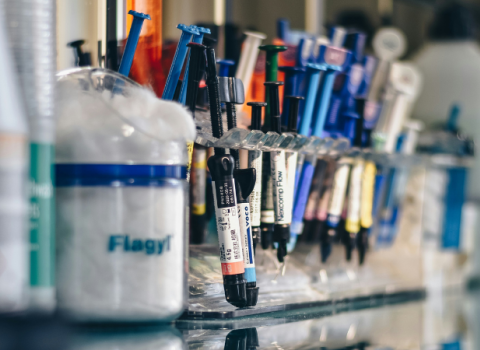As WHO warns the antibiotics pipeline does not address the threat of bacterial resistance, the EU must step up and do more to galvanise R&D, accelerate innovation and help shape a coordinated global response to the impending crisis

There are too few new antibiotics are under development to counter the growing risk of untreatable infections, the World Health Organization (WHO) warned this week.
Most of the drugs currently in the clinical pipeline are modifications of existing classes of antibiotics and are only short-term solutions. There are very few potential treatments for those antibiotic-resistant infections identified by WHO as posing the greatest threat to health, including drug-resistant tuberculosis which kills around 250,000 people each year.
In addition to multidrug-resistant tuberculosis, WHO has identified 12 classes of priority pathogens, some of which cause very common infections, such as pneumonia and urinary tract infections, that are increasingly resistant to existing antibiotics.
Of 51 antibiotics in development, only eight are innovative, and given the average success rates and development times, the current pipeline is likely to lead to as few as 10 new drug approvals over the next five years.
“These potential new treatments will add little to the already existing arsenal and will not be sufficient to tackle the impending AMR threat,” WHO said.
Tsunami of infections
The dire warnings are hardly new. The WHO previously referred to antibiotic resistance as a “slow-moving tsunami”, while the UK’s chief medical officer, Sally Davies, has described superbugs as a national security threat equivalent to terrorism.
The most recent figures for the EU say there are 25,000 deaths per annum from infections that were previously treatable, with a subsequent economic loss of €1.5 billion. A World Bank Report published in March predicted that by 2050 the economic damage caused by antimicrobial resistance would be on a par with the 2008 financial crisis.
The WHO’s latest analysis amplifies the level of concern and spotlights the particular threat of multi-drug resistant tuberculosis. "There is an urgent need for more investment in research and development for antibiotic resistant infections, including TB," WHO’s recently-installed director-general Tedros Adhanom Ghebreyesus said. "Otherwise we will be forced back to a time when people feared common infections and risked their lives from minor surgery."
For TB, a disease that affects mainly the poor, there is very little commercial incentive to invest in developing new treatments. Among the estimated 10.4 million new TB cases in 2015, an estimated 580,000, or 5.6 per cent, were resistant to two of the most important first-line TB drugs, rifampicin or rifampicin and isoniazid.
Only two new antibiotics for treatment of drug-resistant tuberculosis having reached the market in over 70 years, said Mario Raviglione, director of the WHO Global Tuberculosis Programme. “If we are to end tuberculosis, more than $800 million per year is urgently needed to fund research for new anti-tuberculosis medicines,” he said.
Inappropriate and indiscriminate use of antibiotics has encouraged resistant strains of bacteria, which threaten to make existing drugs powerless.
The widespread use of antibiotics in the raising of animals has clearly contributed to the development of resistance as well. Farmers use antibiotics to make animals grow faster but overuse in pig production in China, for example, has spawned superbugs that have surfaced in the US and Europe. Using antibiotics as growth promoters in animals is banned in the EU.
If resistance continues to spread, everyday surgery such as caesarean sections and joint replacement could become too dangerous to perform. The same is true of treatments such as cancer chemotherapy that depress the immune system.
There has been a 30-year void in new antibiotic discoveries; since the 1980s, the total number of antibiotics approved has fallen significantly.
Playing catch up
A broad effort to tackle the huge problem is underway.
The spate of dire warnings and the fact that the threat of resistance is now becoming a reality, has pushed the issue up the political agenda.
Heads of state meeting at the UN last year, agreed to develop national action plans, which mainly focus on hospital stewardship and supervision and curbing the use of antibiotics as growth promoters in animals. The agreement, a non-binding one, does not require countries to commit to specific targets.
In January last year the big guns of the pharmaceutical industry issued a declaration calling on governments to work with them in confronting antimicrobial resistance by removing market disincentives to investing in antibiotics.
More than 80 biotech and pharma companies, and nine industry bodies from 18 countries signed the declaration, which set out measures to encourage investment in new products.
Antibiotics are not very profitable for pharmaceutical companies; indeed, most have fled the field. But now there is serious thought going into new ways to incentivise and reward innovation.
One proposal is that companies which develop new antibiotics should receive market entry awards of $1 billion, so they recoup the cost of R&D as soon as a drug is launched.
Developing new, alternative economic models to spur antibiotic development was the subject of the EU Innovative Medicines Initiative project DriveAB, which concluded earlier this month.
“There won’t be one single solution,” said Ursula Theuretzbacher, a microbiologist at the Centre for Anti-Infective Agents in Vienna and a partner in the project. “It’s a very complex story.”
The group is exploring market entry awards but also how to better coordinate research grants between universities and labs in Europe, Theuretzbacher said. “One thing we don’t think would be effective is patent extensions for drugs.” The project is due to publish its final recommendations in January 2018.
Governments are beginning to put more money into research. The largest funder in the world, the US National Institutes of Health, awarded just 1.2 percent of its grants for research in antibiotics, compared to 18.6 percent for cancer, between 2009 – 2014.
Now it is rebalancing its efforts, amongst other initiative teaming up with the Biomedical Advanced Research and Development Authority in a $48 million drug discovery accelerator CARB-X (Combating Antibiotic-Resistant Bacteria Biopharmaceutical Accelerator).
Earlier this month, the governments of Germany, Luxembourg, the Netherlands, South Africa, Switzerland, and the UK research charity Wellcome Trust pledged a combined €56.5 million to the Global Antibiotic Research and Development Partnership (GARDP), which is a joint initiative by the WHO and the non-profit Drugs for Neglected Diseases initiative.
Following its formation in May 2016, GARDP set out a 2017 – 2023 plan under which it aims to develop four new antibiotics, either by optimising existing drugs or accelerating approval of products coming through the pipeline.
Heeding the wake-up call
It seems that two decades or more after the first warnings were sounded, the world has woken up to threat of antimicrobial resistance.
It is true that the EU has made a contribution to the response. Possibly the most significant move of all was the ban on using antibiotics for growth promotion in livestock. There has also been work to improve surveillance of emerging resistance, promotion of appropriate use of antibiotics and a focus on infection prevention.
Meanwhile, the Innovative Medicines Initiative has put €700 million into various aspects of R&D to promote development of new antibiotics.
But it is clear this is insufficient. The external evaluation of the EU’s 2011 – 2016 antimicrobial resistance action plan concluded the problem persists and more action is needed. Unfortunately, the new action plan, launched in July, offers only more of the same, when what is needed is a radical and urgent shake-up - and significant new investment in research.
For all the talk and initiatives, antibiotic research remains seriously underfunded. In 2014 there were 800 cancer drugs in development compared fewer than 50 antibiotics. Of $38 billion in venture capital invested in pharma R&D from 2003 – 2013, only $1.8 billion was devoted to antibiotics.
The EU may be hampered in this area by fact that health is entirely a member state responsibility. But the global nature of the antibiotic resistance threat means not only that Europe needs a coordinated response, but that the EU uses its expertise and influence to take a lead in shaping the global agenda.





 A unique international forum for public research organisations and companies to connect their external engagement with strategic interests around their R&D system.
A unique international forum for public research organisations and companies to connect their external engagement with strategic interests around their R&D system.